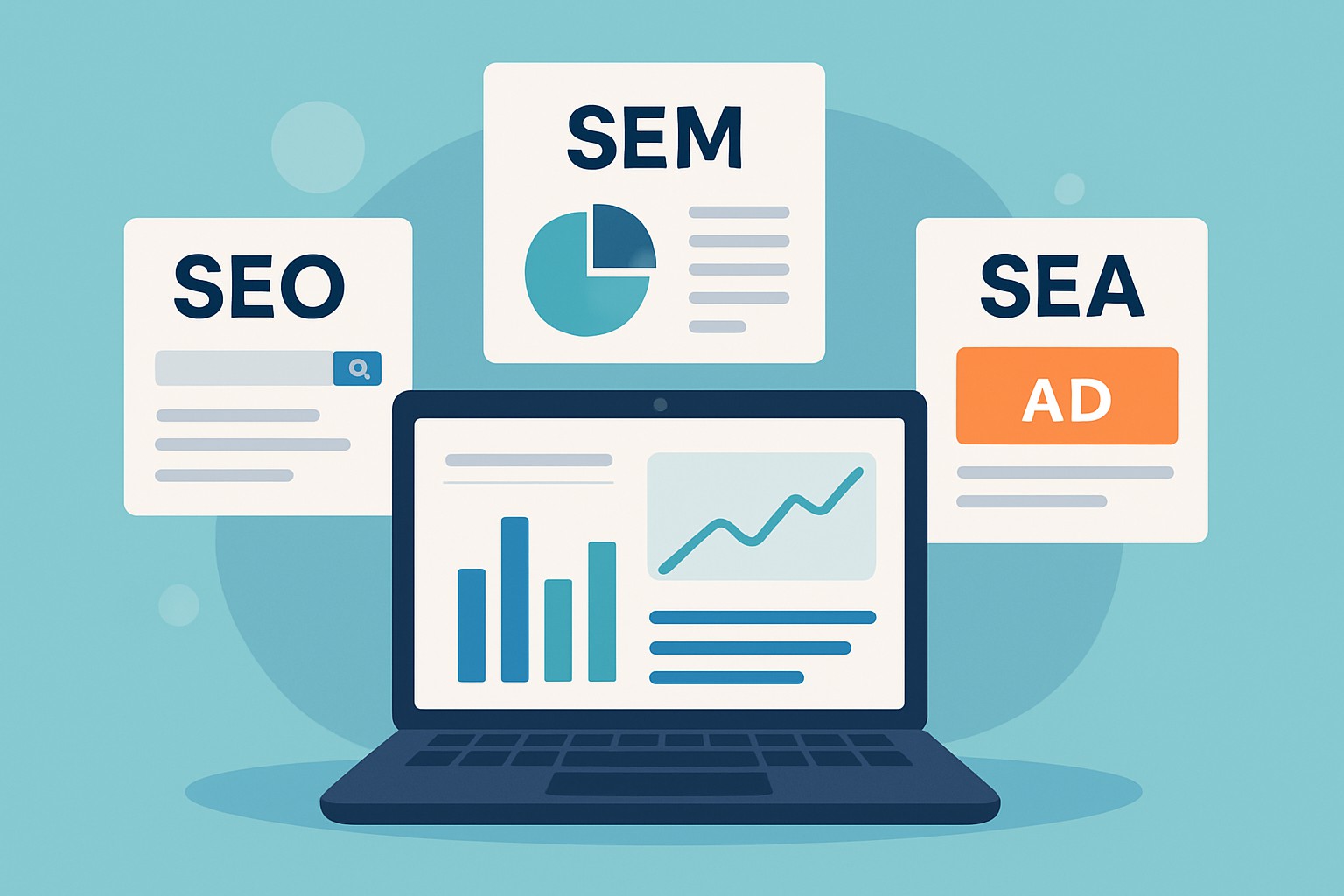
Best google alternatives with strong privacy features
Concerned about privacy and data tracking? Discover top Google alternatives that offer strong privac...

Digital marketing is a vast and ever-shifting landscape packed with specialized jargon and acronyms that can leave newcomers scratching their heads. Among the key players you want to get cozy with are SEM, SEO, and SEA—three critical pieces of the search engine marketing puzzle. Understanding what each one means and how they work together is essential for anyone aiming to boost their online presence, draw in more visitors and turn those leads into loyal customers.
SEM basically means Search Engine Marketing, a catch-all for everything aimed at getting a website noticed on search engines. SEO or Search Engine Optimization zeroes in on strategies that boost organic or unpaid search rankings. It is like earning street cred in the digital world. SEA stands for Search Engine Advertising and covers the paid ads that pop up on those search engine results pages.
SEO is where art meets science and works behind the scenes to help a website climb the ranks in those coveted unpaid search engine results. It’s about tweaking website content just right, ironing out technical issues like site speed and mobile friendliness, building a solid network of backlinks, and placing keywords carefully.
Many businesses lean on a variety of tried-and-true SEO tricks to climb the organic rankings ladder and keep users coming back. The game plan involves crafting unique meta titles and descriptions that make people want to click, sprinkling in schema markup to give search engines a clearer picture of what’s going on, and optimizing for mobile devices since most users are glued to their smartphones. Keeping content fresh and relevant with up-to-date info and carefully chosen keywords is another smart move to stay ahead of the pack.
SEA, short for Search Engine Advertising, means you are paying to have your ads show on the search engine results pages—usually just above or below the natural listings. Platforms like Google Ads let advertisers bid on specific keywords so their ads appear whenever someone types those exact phrases. This kind of paid placement offers an almost immediate boost in visibility and traffic.
Nail down clear campaign goals—whether it’s cranking up sales or pulling in fresh leads or getting more eyes on your website.
Dig into solid research and zero in on keywords your audience is most likely to throw into the search bar.
Craft ad copy that grabs attention with clear calls to action that line up perfectly with those keywords and what people are after.
Set your budget thoughtfully—think daily limits and keyword bids that keep your costs in check without cutting corners.
Keep a close eye on performance metrics like click-through rates and conversions and be ready to tweak your ads and bids to get better results.
Search Engine Marketing or SEM cleverly blends SEO and SEA strategies to create a strong online presence. SEO focuses on steady organic growth and building lasting authority you can rely on. SEA provides immediate visibility and control through paid advertising. Together, they form a flexible marketing mix businesses can adjust based on their timelines, budgets and goals.
| Aspect | SEO | SEA | SEM |
|---|---|---|---|
| Definition | Tweaking and optimizing a website to naturally climb the ranks | Paying to have your ads pop up right when people search | Combining the best of both worlds: SEO and paid ads working hand in hand |
| Cost | Mainly a commitment of time and elbow grease | Straight-up costs you pay for every click or impression | Costs can swing depending on how you balance organic efforts with paid campaigns |
| Speed of Results | Tends to be a slow burn, with progress stacking up over months | Instant spotlight as soon as your ads go live and kicking | A smart combo that delivers quick wins while building steady momentum for the long haul |
| Control | You can nudge rankings but it’s not always in your hands | You’re calling the shots on where and when your ads show up, and what they say | A well-played mix giving you a fair share of control through strategy and tweaking |
| Longevity | Usually sticks around for the long run, like planting a tree | Only sticks as long as your wallet keeps up the pace | Blends lasting, organic growth with a splash of immediate pay-to-play impact |
| Typical Use Cases | Slowly building authority and trust, like earning street cred online | Promoting hot deals or fresh launches that need the spotlight yesterday | Businesses aiming to cover all bases with a solid, well-rounded digital presence |
The comparison table lays out the facts pretty clearly. SEO is a solid bet for building long-term authority and trust and it doesn’t cost a dime directly. On the flip side, SEA offers fast exposure and tight control but the benefits tend to fizzle out once the budget runs dry. SEM cleverly combines these approaches, giving businesses a way to enjoy the best of both worlds for a well-rounded strategy. Take small companies for example. They often lean on SEA for a quick traffic boost while gradually pouring resources into SEO.
Different businesses lean on SEM, SEO and SEA in ways that suit their unique goals and resources. Startups eager to make a splash often jump on SEA first to drive quick traffic and get their name out there. Meanwhile, established companies usually play the long game with SEO, aiming for steady growth and building solid organic authority over time.
People often get SEM, SEO and SEA tangled up which can easily lead to unrealistic expectations or strategies that do not hit the bullseye. SEO typically doesn’t come with a direct price tag but still calls for a good chunk of time, serious know-how and a fair share of resources. SEA meanwhile isn’t a magic button for quick wins unless campaigns are carefully calibrated and finely tuned.
Deciding whether to focus on sem seo sea or a mix of them really comes down to a handful of factors like your budget, business goals and the competition you are up against. It also depends on how mature the market is. Newer businesses often lean toward SEA to grab visibility fast. Meanwhile those playing the long game tend to invest more in SEO for steady lasting growth that sticks around.
17 articles published
Known for her strategic acumen and ability to distill complex concepts into actionable frameworks, Raven Merriweather empowers businesses to navigate the intricacies of Internet Marketing with confidence and clarity.
Read Pages
Concerned about privacy and data tracking? Discover top Google alternatives that offer strong privac...

Confused about SEM and PPC? Learn the clear difference, how they work together, and practical tips t...

Dive into China's top web search engines like Baidu, Sogou, and Shenma, learning how they tailor sea...

Looking for LinkedIn alternatives tailored to your industry? Explore specialized platforms designed...